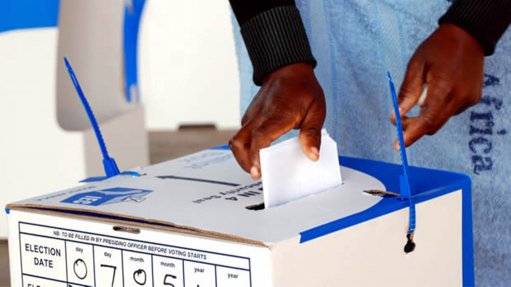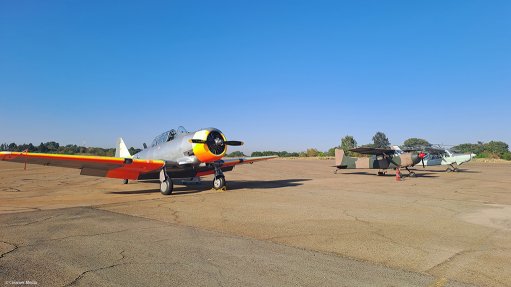The emergence of an economic Superbloc
The 2013 G8 Summit took place at the beginning of last week, near Enniskillen, in County Fermanagh, in the UK province of Northern Ireland. The G8 group comprises Canada, France, Germany, Italy, Japan, Russia, the UK and the US.
One thing that was striking was the pathetic turnout by anticapitalist activists. It is not difficult to get to Enniskillen. The place is a major tourist area. You can fly to Ulster. Or, from Great Britain, take a train and a ferry, or a bus and a ferry, or drive a car and take a car ferry. There are a number of alternative routes. And Northern Ireland has a good provincial public transport system.
Yet only hundreds of protesters managed to turn up. The police had expected many thousands. Perhaps an era of protest is ending. Or perhaps most of the protestors only ever were self-indulgent poseurs who were happy to run through the streets of their home cities but couldn’t and can’t be bothered to go out of town for more than a quick day trip.
Separately, and interestingly, the provincial government seized the opportunity to host the hundreds of journalists covering the summit at a reception at a nearby country house (Castle Coole), where they were feasted with local produce including Northern Irish beef and Bushmills Whiskey (much superior to that stuff from across the water). I have never heard of such a thing before, and it certainly has never happened to me on my limited exposure to international summits. But what a good idea. It must have made a favourable impression.
One of the most important decisions announced at Enniskillen was actually made at the start of the summit, when British Prime Minister DavidCameron, US President Barack Obama and European Commission President José Manuel Barroso jointly announced the formal launching of talks to create a free trade agreement between the US and Europe. The creation of such a free trade area has already been publicly mooted, but it has now gone from a proposal to a programme. The first round of talks should take place in Washington, starting on July 8. The hope is that the talks will be concluded, the deal done, by the end of 2014.
“This is a once in a generation prize and we are determined to seize it,” asserted Cameron. “The whole point is to fire up our economies and drive growth and prosperity around the world – to do things that make a real difference to people’s lives. And there is no more powerful way to achieve that than by boosting trade.”
“The US-EU (European Union) relationship is the largest in the world,” highlighted Obama. “We trade about $1-trillion in goods and services each year, we invest nearly $4-trillion in each other’s economies and all that supports around ten-million jobs on each side of the Atlantic. This potential ground-braking partnership would deepen those ties.”
“Negotiations might not always be easy but they will be worth it,” affirmed Barroso. “We will find solutions to thorny issues, we will keep our eyes on the prize and we will succeed. We intend to move forward fast.”
Make no mistake, such a deal will have global impact. “We’re talking about what could be the biggest bilateral trade deal in history. A deal that will have a greater impact than all the other trade deals on the table put together,” stated Cameron. He forecast that, once concluded, the free trade agreement would increase the EU economy by as much as £100-billion and the US economy by up to £85-billion. British trade alone could be increased by £10-billion.
Trans-Atlantic trade currently accounts for a third of global trade. Last year, US-EU trade was worth $645-billion. The two regions combined account for 45% of the global economy.
Once the deal is done, it will form the biggest, richest trade zone in the world. China and India will each have more people, but the more than 800-million people that will be encompassed by the new US-EU free trade area are much richer. (This population is broken down into just over 500-million in the EU and just under 314-million in the US – 2012 estimates in both cases.) Of course, the talks are going to be hard. And the December 2014 target date may not be met. But it would be unwise to assume that the deal will not happen. There is too much riding on it. Clearly, in part, it is a response to an economic crisis and a reaction to the rise of China. The result will, after all, be the creation of an economic Superbloc.
South Africa, fortunately, is well placed to benefit from this, as it has a trade and development agreement with the EU and is one of the beneficiaries of the US African Growth and Opportunity Act (Agoa). But Agoa is a unilateral US initiative, which can be withdrawn at any time; South Africa should try to negotiate a proper trade deal with the US as soon as possible to ensure that the country has firm access to both sides of the emerging North Atlantic trade bloc.
Ideologically, however, this will give a jolt to those on the left in South Africa who have assumed an inevitable decline by the West and the inevitable rise of China. It also displays the resilience of capitalism.
The West is, in fact, highly adaptable and this development shows that it is adapting to the new world. Other countries, less well favoured than South Africa in terms of trade deals with the US and EU, in Latin America and parts of Asia, for example, will now be eager for some kind of formal trade deal with one or another or both partners in the emerging Superbloc, for fear of being marginalised in trade terms.
Comments
Press Office
Announcements
What's On
Subscribe to improve your user experience...
Option 1 (equivalent of R125 a month):
Receive a weekly copy of Creamer Media's Engineering News & Mining Weekly magazine
(print copy for those in South Africa and e-magazine for those outside of South Africa)
Receive daily email newsletters
Access to full search results
Access archive of magazine back copies
Access to Projects in Progress
Access to ONE Research Report of your choice in PDF format
Option 2 (equivalent of R375 a month):
All benefits from Option 1
PLUS
Access to Creamer Media's Research Channel Africa for ALL Research Reports, in PDF format, on various industrial and mining sectors
including Electricity; Water; Energy Transition; Hydrogen; Roads, Rail and Ports; Coal; Gold; Platinum; Battery Metals; etc.
Already a subscriber?
Forgotten your password?
Receive weekly copy of Creamer Media's Engineering News & Mining Weekly magazine (print copy for those in South Africa and e-magazine for those outside of South Africa)
➕
Recieve daily email newsletters
➕
Access to full search results
➕
Access archive of magazine back copies
➕
Access to Projects in Progress
➕
Access to ONE Research Report of your choice in PDF format
RESEARCH CHANNEL AFRICA
R4500 (equivalent of R375 a month)
SUBSCRIBEAll benefits from Option 1
➕
Access to Creamer Media's Research Channel Africa for ALL Research Reports on various industrial and mining sectors, in PDF format, including on:
Electricity
➕
Water
➕
Energy Transition
➕
Hydrogen
➕
Roads, Rail and Ports
➕
Coal
➕
Gold
➕
Platinum
➕
Battery Metals
➕
etc.
Receive all benefits from Option 1 or Option 2 delivered to numerous people at your company
➕
Multiple User names and Passwords for simultaneous log-ins
➕
Intranet integration access to all in your organisation


















